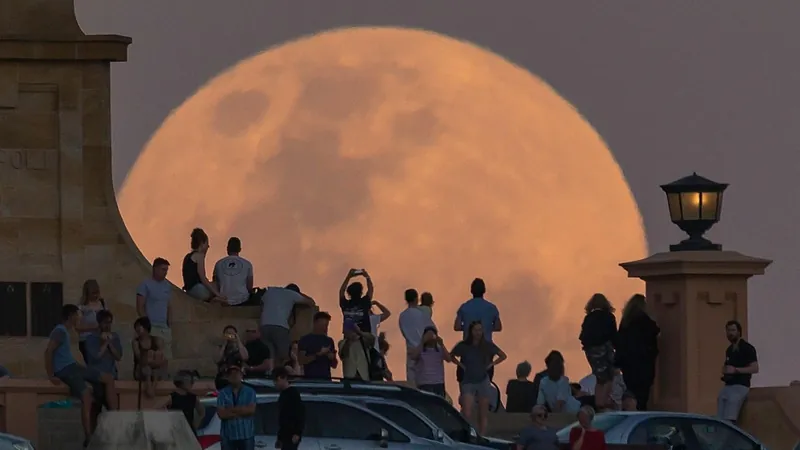
Don’t Miss This Week’s Celestial Wonders: A Supermoon, Saturn Eclipse, and Comet Viewing!
2024-10-14
Author: Emma
Celestial Highlights:
Monday, October 14 - Wednesday, October 16: Comet Tsuchinshan-ATLAS Shines After Sunset
For the northern hemisphere, particularly those north of the equator, the evenings are perfect for spotting Comet C/2023 A3 (Tsuchinshan-ATLAS). While it is barely visible to the naked eye, binoculars will enhance your view of its ethereal tail. This is a true treat for astronomers and lovers of the cosmos—don’t miss it!
Monday, October 14: Saturn Dazzles Near the Moon
After dark, focus to the southeast to witness a spectacular scene as a 91%-lit waxing gibbous moon rises just shy of Saturn, which is less than a degree away. If you happen to own a small telescope, peek at Saturn's magnificent ring system. In certain parts of Asia and Africa, this moon will briefly obscure Saturn—a fascinating celestial occultation!
Thursday, October 17: Behold the Full “Hunter’s Supermoon”
Mark your calendars! The full “Hunter’s Supermoon,” the tenth full moon of 2024, will be the largest and brightest supermoon of the year. North Americans can catch the best view at moonrise during dusk, making for a breathtaking sight that will illuminate the landscape.
Friday, October 18: Hunter’s Moon Continues to Captivate
Even though it will appear as a 97%-lit waning gibbous moon tonight, the “Hunter’s Moon” remains a stunning spectacle. Witness the moonrise in the twilight, where its golden glow will create an enchanting atmosphere.
Saturday, October 19: A Dance Of The Moon and Pleiades
Look to the east this evening to find the waning gibbous moon gracefully positioned next to the enchanting Pleiades star cluster, also known as the “Seven Sisters.” To the naked eye, you’ll notice about six stars, with binoculars revealing a stunning collection of around 800 young blue stars glimmering across approximately 444 light-years of space.
Tips for Stargazing Success
To maximize your viewing pleasure, check out online planetariums such as SkySafari Pro or Stellarium for the most accurate, location-specific timings for planet-rise/planet-set, sunrise/sunset, and moonrise/moonset.
More to Explore!
For those eager to dive deeper into the wonders of our universe, consider picking up books like “Stargazing in 2024” or “A Stargazing Program For Beginners.” Prepare for awe, and may your skies be clear!
Don’t wait—these cosmic events promise unforgettable sights. Grab your binoculars, find a dark spot, and get ready to be amazed!









 Brasil (PT)
Brasil (PT)
 Canada (EN)
Canada (EN)
 Chile (ES)
Chile (ES)
 España (ES)
España (ES)
 France (FR)
France (FR)
 Hong Kong (EN)
Hong Kong (EN)
 Italia (IT)
Italia (IT)
 日本 (JA)
日本 (JA)
 Magyarország (HU)
Magyarország (HU)
 Norge (NO)
Norge (NO)
 Polska (PL)
Polska (PL)
 Schweiz (DE)
Schweiz (DE)
 Singapore (EN)
Singapore (EN)
 Sverige (SV)
Sverige (SV)
 Suomi (FI)
Suomi (FI)
 Türkiye (TR)
Türkiye (TR)